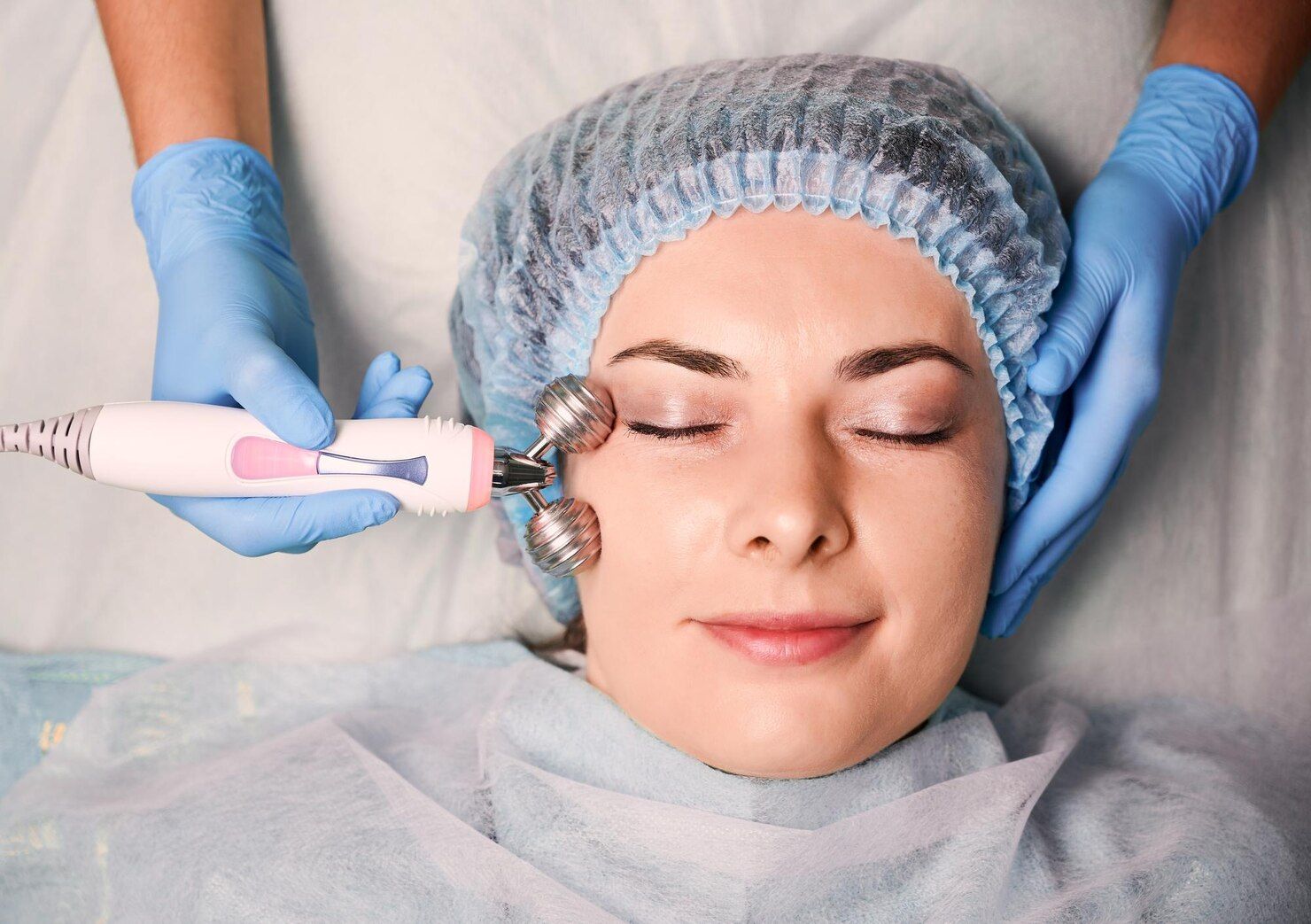Exploring Laser Treatment for Dark Circles: Helpful Tips, Insights, and Information
Dark circles under the eyes are a common concern affecting people across different age groups and skin types. They develop for several reasons: excess pigmentation, visible blood vessels, thin under-eye skin, genetics, lifestyle habits, and natural ageing. Over time, the area beneath the eyes may appear darker due to increased melanin, reduced collagen, or shadowing caused by hollowing.

Laser treatment is one of the widely used modern dermatological techniques designed to target issues such as pigmentation, vascular visibility, and texture irregularities. It works by delivering controlled light energy to the skin, encouraging collagen stimulation, reducing excess pigment, or minimizing visible vessels. Because the under-eye region is delicate, laser approaches are highly specialized and require careful planning and proper safety measures.
Importance
Understanding laser treatment for dark circles is relevant today due to several global factors:
Growing appearance awareness: People across regions are becoming more mindful of their skin health, contributing to rising interest in minimally invasive aesthetic methods.
Common global concern: Dark circles affect individuals from diverse ethnic backgrounds. Different skin tones experience different causes—pigmentation in deeper tones and vascular visibility in lighter tones.
Demand for long-term solutions: Creams and topical products often provide limited improvement, motivating people to explore more targeted, science-based treatments.
Advances in technology: Modern laser systems are more precise than older technologies, offering improved comfort and reduced downtime.
Focus on safety: International dermatology communities emphasise patient education, proper protocols, and evidence-based treatment decisions.
As interest grows, understanding the science, risks, and regulations behind laser procedures helps people make informed choices without relying on exaggerated expectations.
Recent Updates
The past year has seen several global developments in the field of laser-based treatments for under-eye pigmentation and rejuvenation:
Improved safety standards: Many countries have refined their guidelines for handling laser devices, especially near sensitive areas such as the eyes. Global dermatology groups stress better operator training, advanced protective eyewear, and updated facility standards.
Rise of combination therapies: Recent research trends highlight improved outcomes when lasers are used along with supportive techniques such as collagen-stimulating treatments or controlled resurfacing. These combinations may offer enhanced brightness, texture improvement, and pigment reduction.
More adaptable laser systems: Devices that allow fine-tuning of wavelength, pulse duration, and energy output are becoming more common, helping practitioners customise treatments for different skin tones and causes of dark circles.
Recognition of individual causes: International clinical discussions now emphasise personalised assessments rather than one-method solutions. This prevents overtreatment and reduces risks for people with sensitive or darker skin.
Focus on long-term skin health: Dermatologists increasingly recommend lifestyle-based strategies—sleep regulation, sun protection, and reducing eye strain—alongside optional procedures to maintain treatment results.
These updates reflect a global shift toward evidence-based, cautious, and customised approaches to under-eye treatments.
Laws or Policies
Laser treatments fall under safety and medical device regulations in many countries. While rules vary, several global themes apply:
Medical device classification: Many regions classify lasers used in dermatology as controlled devices. Regulations focus on manufacturing standards, quality control, and operator training.
Professional qualification requirements: Several countries require that aesthetic lasers be used only by trained medical professionals or practitioners certified under national health regulations.
Facility safety standards: Guidelines often require:
Dedicated laser rooms
Protective eyewear
Non-reflective surfaces
Fire-safety protocols
Documented calibration and maintenance
Patient safety guidelines: International dermatology groups advise mandatory eye protection, patch testing when needed, detailed medical history checks, and clear communication of expected outcomes and risks.
Consumer protection rules: Many regions have advertising standards preventing exaggerated or misleading claims about laser results. Global policies encourage transparent, realistic expectations rather than guaranteed outcomes.
These regulations aim to enhance patient safety and ensure laser procedures adhere to high clinical standards across countries.
Tools and Resources
Here are globally useful tools and resources related to under-eye laser treatments:
Skin-type evaluation charts: Tools such as the Fitzpatrick scale help assess UV sensitivity and predict pigment-related risks during laser procedures.
Patch-test guidelines: Many dermatology practices use patch-testing protocols to evaluate how a patient’s skin may respond to a particular wavelength or laser intensity.
Clinical research databases: Platforms that compile global studies on dermatology, pigment disorders, vascular issues, and laser mechanisms.
Pre-procedure questionnaires: These help evaluate conditions such as photosensitivity, recent medication use, previous procedures, and medical history.
Aftercare checklists: Guides that outline best practices such as cooling, hydration, sun protection, and appropriate cosmetic use after treatment.
Professional association resources: Dermatology societies across countries provide educational material, safety standards, and treatment guidelines.
These resources support informed decision-making and promote safe treatment planning.
Example Table: Common Laser Types for Dark Circles
| Laser Type | Primary Purpose | Typical Use Case | Notes |
|---|---|---|---|
| Q-Switched Laser | Targets melanin | Pigmentation-related dark circles | Often used for deeper pigmentation |
| Fractional Laser (CO₂ / Er:YAG) | Resurfacing, collagen stimulation | Thin skin, texture issues | Requires careful eye protection |
| Vascular Laser | Targets blood vessels | Blue or purple under-eye circles | Helpful when vascular visibility is the main cause |
| Low-Level Light-Based Systems | Gentle stimulation | Mild discoloration or early signs | Not meant for deep pigmentation |
Frequently Asked Questions
What causes dark circles, and can lasers address all types?
Dark circles can be caused by pigmentation, visible vessels, thin skin, hollowing, or lifestyle factors. Lasers mainly target pigmentation and vascular visibility. They are less effective for structural hollowing, which may require other techniques. A proper assessment helps identify which cause is dominant.
Are laser treatments safe for all skin tones?
Modern lasers can be adjusted for different skin types, but safety depends on wavelength, energy settings, and practitioner expertise. Darker skin tones may be more prone to pigmentation changes if treated aggressively, so conservative settings and specialised devices are important.
What can someone expect during the procedure?
A typical session includes cleansing of the area, protective eyewear, controlled laser application, and brief post-procedure cooling. People usually experience mild warmth or tingling. Downtime varies depending on laser type; resurfacing lasers may require more recovery.
How long do the results last?
Results vary depending on skin type, cause, lifestyle, and maintenance. Pigmentation-related improvements may be long-lasting if sun protection and healthy habits are maintained. Vascular or structural causes may require periodic follow-ups.
What are the possible risks?
Risks include temporary redness, swelling, dryness, changes in pigmentation, and, in rare cases, scarring. Eye protection is essential because the under-eye region is highly sensitive. Most side effects are temporary when proper protocols are followed.
Conclusion
Laser treatment for dark circles is one of the advanced methods used globally to address pigment, vascular visibility, and texture concerns. While it offers promising results in many cases, it is not universally suitable for every person or every cause. Understanding the nature of your dark circles—whether pigment-based, vascular, or structural—helps determine whether a laser-based approach is appropriate.
Recent international trends emphasise safety, customisation, and evidence-based practice. Regulations worldwide are also evolving to ensure better device standards, trained operators, and improved patient protection. When combined with healthy lifestyle habits, sun protection, and informed decision-making, laser treatment can be a helpful tool for selected individuals seeking improvement in under-eye appearance.
If considering laser treatment, choosing a qualified professional, understanding the potential risks, and maintaining realistic expectations are essential steps toward safe and informed outcomes.





